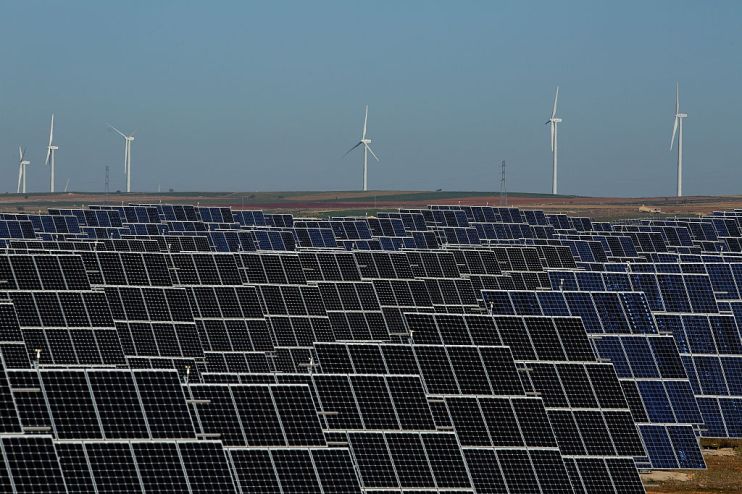IEA: Renewable energy to ramp up by a third this year, driven by supply security fears and Chinese growth

The world’s renewable energy capacity will jump a third this year – the largest increase ever recorded – driven by green policies, higher oil and gas prices, and energy security concerns, revealed the International Energy Agency.
In a new report, the Paris-based climate agency expects a vast ramp-up in the deployment of solar and wind power, with the world’s total renewable capacity rising to 4,500 gigawatts (GW), equal to the total power output of China and the United States combined.
The Renewable Energy Market Update, which was published today, calculates that global renewable capacity additions are set to soar by 107GW – the largest absolute increase ever – to more than 440GW in 2023.
They key driver of this expansion is China, which is consolidating its leading position as a renewables developer, and is set to account for almost 55 per cent of global additions of renewable power capacity in both 2023 and 2024.
Expansion is also taking place across the West with Europe accelerating growth in response to a Russian supply squeeze.
It now expects renewable capacity additions in Europe to rise 40 per cent from before Russia’s invasion of Ukraine, which led many countries to boost solar and wind uptake to reduce their reliance on Russian natural gas.
Meanwhile the US’s Inflation Reduction Act has already begun luring investment across the Atlantic.
When it comes to energy sources, solar is expected to drive this vast growth – sun-generated energy makes up two-thirds of this year’s increase in renewable power capacity.
Solar is expected to keep growing in 2024, with the expansion of large-scale PV plants being accompanied by the growth of smaller systems.
The IEA attributes this embrace of solar power across developed markets to higher electricity prices, which are encouraging consumers to slash their energy bills.
Wind power developments are forecast to rebound sharply in 2023 growing by almost 70 per cent year on year after a difficult couple of years in which growth was slugging.
The faster growth is mainly due to the completion of projects that had been delayed by Covid-19 restrictions in China and by supply chain issues in Europe and the US.
Government policy essential to green future
Further growth in 2024 will depend on whether governments can provide more policy support to address challenges in terms of planning, development and auctions.
Newly-installed solar PV and wind capacity is estimated to have saved EU electricity consumers €100bn during 2021-2023 – displacing more expensive fossil fuel generation.
The IEA predicts wholesale electricity prices in Europe would have been eight per cent higher in 2022 without the additional renewable capacity.
“Solar and wind are leading the rapid expansion of the new global energy economy. This year, the world is set to add a record-breaking amount of renewables to electricity systems – more than the total power capacity of Germany and Spain combined,” said IEA executive director Fatih Birol.
Commenting on the effect of Russia’s invasion of Ukraine on energy policy, he added: “The global energy crisis has shown renewables are critical for making energy supplies not just cleaner but also more secure and affordable – and governments are responding with efforts to deploy them faster. “
The IEA director also called on countries to address key challenges such as boosting national power grids to meet a rapid increase in demand.
“Policies need to adapt to changing market conditions, and we need to upgrade and expand power grids to ensure we can take full advantage of solar and wind’s huge potential,” he said.
The report warns that in contrast to solar, wind turbine supply chains are not growing fast enough to match accelerating demand over the medium-term.
This is mainly due to rising commodity prices and supply chain challenges, which are reducing the profitability of manufacturers.
Meanwhile, inflation has meant renewable energy auctions were undersubscribed by a record 16 per cent in 2022.